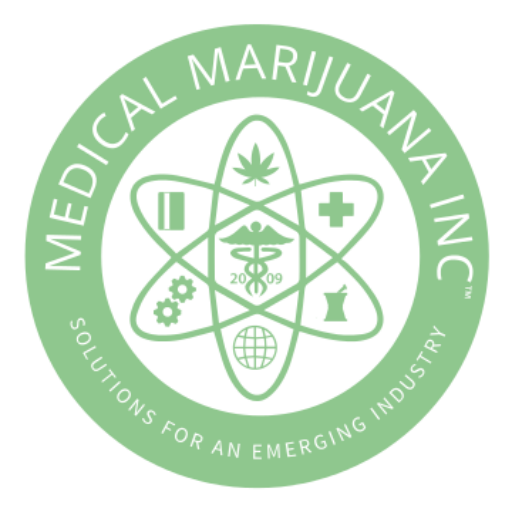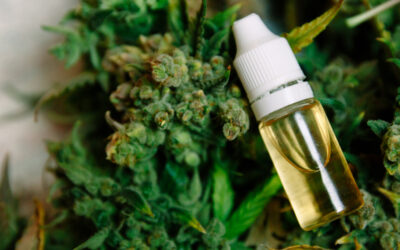In the raw extract from the cannabis plant, be it the marijuana form, or the hemp CBD form – we find cannabinoids in their acid form, including THC-A (marijuana) and CBD-A (hemp). Many clever and talented marijuana growers are now also growing a CBD-variety and many 50% / 50% strains are coming forth. Some types of marijuana have now been grown with MORE CBD than THC. These acids, when heated (or decarboxylated) will turn to the more “active” form. Thus THC-A when heated will turn to THC and similarly for CBD-A when heated will turn to CBD. Both show therapeutic potential –thus the subject of this week’s newsletter.
CBD-A, aka Cannabidiolic Acid, Has Shown to Inhibit Aggressive Breast Cancer Migration
A New Study Shows that CBD-A (aka Cannabidiolic Acid, a major cannabinoid in hemp-for-fiber-type cannabis) is an Inhibitor of MDA-MR-231 Breast Cancer Cell Migration.
Further this is another novel mechanism of action that CBD-A generates as opposed to findings by Dr. Sean McAllister of California Pacific Medical Center – where his now famous study showed CBD (in active, not acid form) to be a Novel Inhibitor of Id-1 Gene Expression in Aggressive Breast Cancer Cells.
The mechanism of action described in the study, headed by Dr. S. Takeda (with the Laboratory of Xenobiotic Metabolism and Environmental Toxicology, Hiroshima International University and Dept. of Molecular Biology, Daiichi University of Pharmacy, Fukuoka, Japan), shows:
- Cannabidiolic Acid to induce cannabinoid-mediated necrosis
- CBD-A to be an inhibitor of MDA-MR-231 a widely used cancer cell line that is used in cancer biology
- This action occurs because of the down regulation of COX-2 (cyclooxygenase, an enzyme). In human invasive breast cancers, the excessive COX-2 expression has been detected in about 40% of all patients
- The downregulation of COX-2 is possibly caused by the down-regulation of c-fos, a component of the activator protein-1 (AP-1) dimer complex. This AP-1 dimer complex is a transcription factor for the positive regulation of the COX-2 gene.
- Thus CBD-A may be working with the body’s DNA to alter the COX-2 gene transcription factor – and thus correcting the aggressive breast cancer proliferation
Highlights of the study include:
- Cannabidiolic Acid (CBD-A) exists as a MAJOR COMPONENT in fiber-type cannabis (hemp for industrial use, mainly textiles in this variety)
- CBD-A is identified as an ACTIVE COMPONENT
- CBD-A is an INHIBITOR of highly aggressive human breast cancer cell migration (aggressive cell migration = metastasis)
- The mechanism of action responsible for the effects of CBD-A involves activation of RhoA
- RhoA is an inhibitor of cancer cell activity
CBD has been shown to be a novel inhibitor of Id-1 gene expression in aggressive Breast Cancer Cells via Id-1 Gene Expression – this research by a team led by Dr. Sean McAllister of California Pacific Medical Center shows that malfunctioning Id-1 gene expression causes the metastatic effect of certain cancer cells, particularly breast cancer. It seems that CBD has the ability to “switch off” this malfunctioning Id-1 gene and thus causes programmed cell death (cellular apoptosis) of these cancerous cells.
CBD has been shown to similarly cause cellular apoptosis in leukemia cancer cells and research by a Dr. Robert J. McKallip from University of South Carolina shows that this is caused by activating certain enzymatic pathways. Technically these enzymes known as p22phox and NOX-4 control the expression or the ability of the body to produce them on-demand – and this has a hydrogen peroxide-like effect to cleanse tissues and allow the immune system to recognize these leukemia cells as harmful invaders – thus this begins the process of programmed cell death (cell apoptosis).
CBD-A now inhibits MDA-MR-231 cancer cells, the widely used cancer cell line being utilized by researchers.
Cancer, we believe is a disease of metabolic error – and can be corrected by Nutrition (against Disease). More below:
Improvements in mitochondrial functioning – and if one believes the research of Dr. Otto Warburg, two-time Nobel Prize Winning Laureate, the cancer cell metabolism is different than normal healthy cell metabolism. Healthy cells burn glucose for energy via a highly efficient and effective oxidative process. Cancer cells revert to a less efficient fermentation process that leads to fungus, a change in the overall “biological terrain” and here, bacteria and micro-organisms have to change shape and form (morph / pleomorphism) in order to survive. This can lead toward sickness, disease and even cancer – according to Biological Medicine proponents (mostly found in Europe).
LEAF – A Short Documentary from Dr. William Courtney re THC-A
We also need to discuss that THC-A – another cannabis-family acid, this of marijuana-based cannabis – has also shown potential therapeutic application. The short documentary, titled Leaf – provides anecdotal evidence of an individual’s path toward improved health via juicing the raw leaves of the cannabis (marijuana) plant. Here, presumably the young woman was receiving significant amounts of THC-A – and will hopefully lead researchers toward similar to CBD-A studies.
The raw juice of the cannabis plant has shown potential therapeutic value for the high concentration of non-psychoactive THC-A. This acid can be converted into THC active form via decarboxylation (gentle heating) process – and is why people smoke marijuana: to convert the acids into actives and thus get the psychoactive effect.
The story that inspired the Leaf documentary concerned a chronically ill young adult who had many disorders, including fibromyalgia, digestive and female-related disorders. Having basically “failed” the traditional Western medicine approach, she turned toward alternative and integrative possibilities. Once she started juicing raw cannabis leaves, she saw a remarkable improvement in her overall health. The juice of the raw cannabis (marijuana type) leaves of the plant seems to be rich in THC-A.
THC-A by itself is actually non-psychoactive and only turns psychoactive when heated (decarboxylated). Nonetheless, it seems that THC-A, like THC, has a more direct effect upon the CB1 receptor site than does CBD. So to describe this phenomena, we may see THC and THC-A acting like an old fashioned “lock-and-key” type of receptor site action. CBD has a more peripheral effect on the CB-1 receptor – so more akin to an electronic door lock system – where one can open all four doors of a car plus the trunk with a frequency-based or “vibration-based” interaction. So even though more indirect, the effect of CBD upon the CB-1 receptor can be dramatic.
This is why some patients and some conditions seem to respond to the acid forms of both THC and CBD. Whether CBD-A has this lock-and-key effect upon CB-1 remains open for debate – nonetheless the cannabinoids in acid form do seem to hold therapeutic potential. We look forward to keeping our readers more informed over the coming weeks and months as research comes forth.
To good health,
Stu
Stuart W Titus, PhD
President & CEO
Medical Marijuana Inc. (OTC: MJNA)






